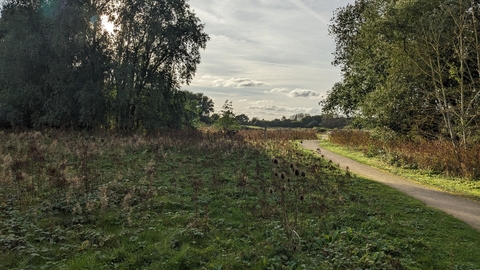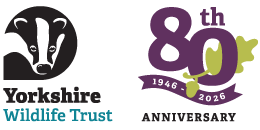Please note that the toilets and Visitors Centre at Barlow Common are permanently closed.

Barlow Common Nature Reserve
Know before you go
Dogs
When to visit
Opening times
Open dawn till dusk.Best time to visit
March to September, but it is a year round site for ease of access to green space and nature.
About
Listen out for the loud, laughing call of a green woodpecker and keep an eye out for grass snakes basking in the sun.
In summer, butterflies including peacock, red admiral and painted lady feast on flowering teasels, whilst dramatically-marked cinnabar moth caterpillars are visible on ragwort - striped yellow and black as a vivid warning to would-be predators. Flowers including evening primrose, lady's bedstraw, wild basil and common centaury provide a stunning display, whilst ox-eye daisies and orchids also draw vistors in.
On the far pond ducks, geese and swans raise young in the spring; whilst under the water dragonfly larvae and newts are waiting to be discovered by intrepid pond dippers!
Come winter the teasels, flowering now ended for the year, provide seeds for incoming flocks of finches. Sharp-eyed visitors may also glimpse a timid roe deer or fox taking a wander.
Forest School
Stay and play sessions led by Naturewood Forest Club run on Tuesdays and Fridays. Visit their website for more information.
Seasonal highlights
- Spring: Birds - Grey heron; Kingfisher; Reed bunting
- Summer: Plants - Common spotted orchid; Invertebrates - Red admiral; Birds - Cuckoo; Reptile - Grass snake
- Autumn: Mammals - Fox; Birds - Great spotted woodpecker
- Winter: Mammals - Roe deer; Birds - Long-tailed tit; Siskin; Swan
History
Whilst warblers, woodpeckers and wall brown butterflies now call Barlow Common home, the site has a chequered past.
Up until the early 1900s local people grazed cattle, pigs and sheep on the common, after which the site was purchased by a local rail company who used it as a ballast tip.
Later, in 1983, British Rail reclaimed the land and capped the tip using local soils.
Selby District Council then acquired the site in 1986 and managed it until March 2013, when the Trust took over its care.
Directions
Public transport
Regular bus services run close to Barlow Common - the entrance to the nature reserve is about 50 metres from the nearest bus stop. The nearest train station is in Selby.
By car
Barlow Common is easily reached from the A1041 Selby to Snaith road by taking the southern-most turning to Barlow village. After less than a mile the road to the nature reserve will be on the left.





